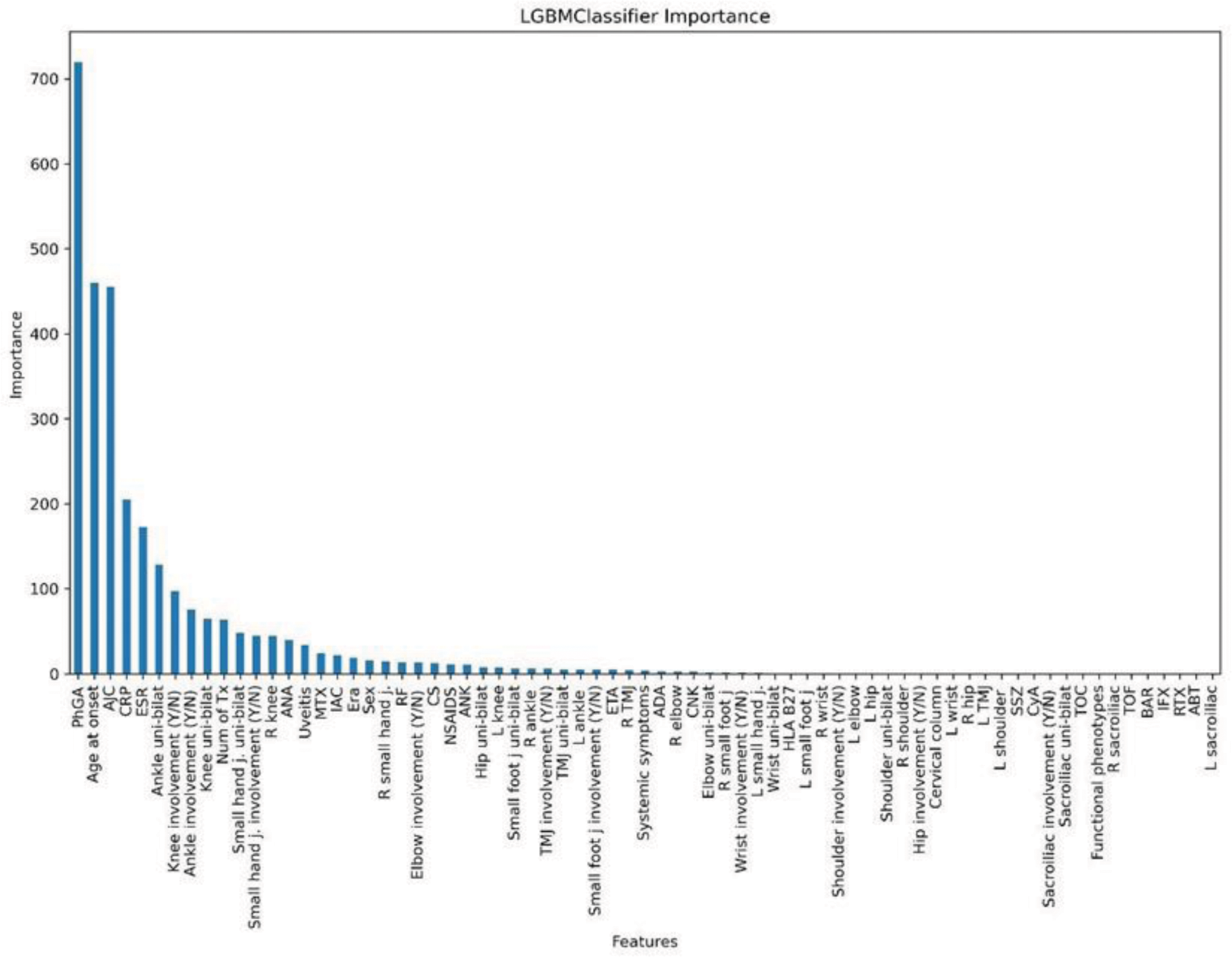

Background: The achievement of inactive disease (ID) is the goal of contemporary treatment strategies in all patients with juvenile idiopathic arthritis (JIA). Complete disease quiescence is regarded as the ideal therapeutic goal as its attainment helps to minimize pain and disability associated with active disease, prevent articular and extra-articular damage, and improve the quality of life of children and their families. Artificial intelligence is a powerful tool that is well suited to identify the variables that are of foremost relevance to predict a desired outcome.
Objectives: The aim of our study is to seek for the disease parameters that have the best ability to predict the achievement of the state of ID at 24 months using artificial intelligence methods.
Methods: The clinical charts of all consecutive patients with JIA by ILAR criteria who were first seen at study centre within 6 months after disease onset between 2007 and 2019 and had follow-up visits at 6, 12, 18, and 24 months after initial evaluation were reviewed retrospectively. Demographic parameters, clinical features (including physician-centred and parent-reported outcomes), laboratory tests and prescribed therapy were collected at all visits and entered into an excel dataset. ID was defined by 2004 Wallace criteria. The Last Observation Carried Forward (LOCF) and posteriorly Baseline Observation Carried Forward (BOCF) methods were used to impute missing values. Patients in whom imputation could not be performed with these computational techniques were excluded. Data recorded at baseline and at 0-, 6- and 12-month follow-up visits were included in the analysis of prediction of achievement of ID at 24 months. The study cohort was divided into two subsets: a training set (50%) and a test set (50%). Multivariate time series forecasting was applied to the longitudinal data through the Light Gradient Boosting Machine (LightGBM) method using the Scikit-learn with mlforecast to train and test the predictive model. Features were ranked by importance to determine their relative impact on achievement of ID. Hyperparameter tuning was carried out using the optuna package. Matthews correlation coefficient (MCC) was used as a metric to assess model performance. The entire analysis procedure was implemented in Python.
Results: Of the 449 patients who had their initial evaluation within 6 months after disease onset at study centre in the study period, 294 had longitudinal assessments available. 147 patients were randomly allocated to the training set and 147 to the test set. For each follow up visit 74 features were collected. By applying the mlforecast method coupled with LightGBM algorithm, we obtained 71% of MCC in the training set and 69% in the test set, which indicated a strong ability of our artificial intelligence model to predict the state of ID from the identified clinical variables at 0, 6 and 12 months. The ranking of features which proved relevant in predicting ID is shown in Figure 1. The best predictor of ID was the physician’s global assessment of disease activity (PhGA), followed by the age at onset and count of active joints. Other relevant features were acute phase reactants (erythrocyte sedimentation rate and C-reactive protein).
Conclusion: The PhGA over time was the strongest predictor of achievement of ID at 24 months, which highlights the importance of its regular scoring and its key role in guiding treatment decisions. The prominent importance of physician-centred outcome measures (PhGA and active joint count) and acute phase reactants in ID prediction supports the use of the Juvenile Arthritis Disease Activity Score (JADAS), which includes all these variables, in deciding treatment adaptations within treat-to-target strategies aimed to attain complete disease control.REFERENCES: NIL.
Feature importance derived from the LGBM model for predicting ID.

Acknowledgements: Ana Isabel Rebollo-Giménez is holding a fellowship supported by the Sociedad Española de Reumatología.
Disclosure of Interests: Ana Isabel Rebollo Giménez: None declared, Davide Cangelosi: None declared, Francesca Ridella: None declared, Silvia Orsi: None declared, Elena Aldera: None declared, Valentina Natoli: None declared, Silvia Rosina: None declared, Esperanza Naredo: None declared, Angelo Ravelli AbbVie, Novartis, Pfizer,Reckitt Benckiser, Alexion, Galapagos, Sobi.